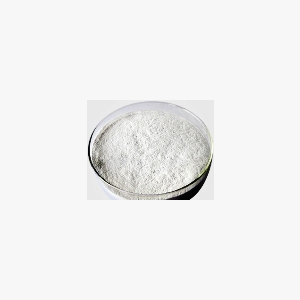
Ph Eur
C4H6KNO4,½H2O -- 180.2
DEFINITION
Potassium hydrogen (2S)-2-aminobutanedioate hemihydrate.
Content: 99.0 per cent to 101.0 per cent (anhydrous substance).
CHARACTERS
Appearance: White or almost white, powder or crystalline powder, or colourless crystals.
Solubility: Very soluble in water, practically insoluble in alcohol and in methylene chloride.
IDENTIFICATION
A. It complies with the test for specific optical rotation (see Tests).
B. Examine the chromatograms obtained in the test for ninhydrin-positive substances.
Results: The principal spot in the chromatogram obtained with test solution (b) is similar in position, colour and size to the principal spot in the chromatogram obtained with reference solution (a).
C. It gives reaction (b) of potassium (2.3.1).
TESTS
Solution S: Dissolve 2.5 g in carbon dioxide-free water prepared from distilled water and dilute to 100 ml with the same solvent.
Appearance of solution: Solution S is clear and colourless.
pH: 6.0 to 7.5 for solution S.
Specific optical rotation: + 18.0 to + 20.5 (anhydrous substance).
Dissolve 0.50 g in a mixture of equal volumes of hydrochloric acid and water and dilute to 25.0 ml with the same mixture of solvents.
Ninhydrin-positive substances: Thin-layer chromatography.
Test solution (a): Solution S.
Test solution (b): Dilute 1.0 ml of solution S to 10.0 ml with water.
Reference solution (a): Dissolve 25 mg of potassium hydrogen aspartate hemihydrate CRS in water and dilute to 10 ml with the same solvent.
Reference solution (b): Dilute 1.0 ml of test solution (b) to 20.0 ml with water R.
Reference solution (c): Dissolve 10 mg of glutamic acid CRS and 10 mg of the substance to be examined in water and dilute to 25 ml with the same solvent.
Plate: TLC silica gel plate R.
Mobile phase: glacial acetic acid R, water R, butanol R (20:20:60 V/V/V).
Application: 5 μl.
Development: Over 2/3 of the plate.
Drying: In air.
Detection: Spray with ninhydrin solution and heat at 100-105C for 15 min.
System suitability: Reference solution (c):
the chromatogram shows 2 clearly separated principal spots.
Limits: Test solution (a):
any impurity: any spot, apart from the principal spot, is not more intense than the spot in the chromatogram obtained with reference solution (b) (0.5 per cent).
Chlorides: Maximum 200 ppm.
Sulphates: Maximum 500 ppm.
Ammonium: Maximum 200 ppm, determined on 50 mg.
Iron: Maximum 30 ppm.
Heavy metals: Maximum 10 ppm.
Water: 4.0 per cent to 6.0 per cent, determined on 0.200 g.